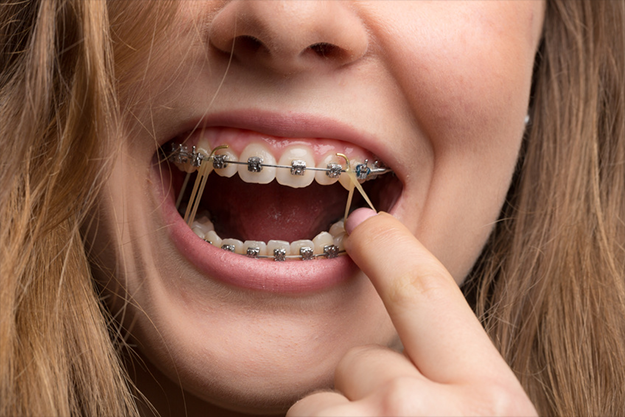For many orthodontic patients, elastics can act as an integral part of the orthodontic process. Orthodontic elastics apply a bit of extra pressure in a particular direction that helps to move teeth or to improve an individual’s bite. Your orthodontist will loop the elastics over hooks on brackets on your top and bottom teeth. If you wear aligners, the elastics can get attached to buttons that are attached to your teeth. Don’t worry. These buttons appear clear to the human eye.
Why Would I Need Orthodontic Elastics?
Every smile differs from the smile of other people. One person might need elastics to improve their smile. Other orthodontic patients may not need this type of treatment. For one thing, it could depend on the alignment of your jaw. If you need elastics, you could wear them for different periods of time. While some patients could wear them for a few months, others might have them on for up to a year. When you wear elastics for an extended period of time, this can ensure that your orthodontic progress doesn’t stall. Keep your elastics in your mouth, even as you’re consuming food. If needed, you can take them out for short periods of time. Just put in new elastics when you’re finished eating.
What Types of Orthodontic Elastics Are There?
Ligatures: These elastics secure all of the archwires into the proper place.
Inter-Arch Elastics: These elastics help with your bite. Your orthodontist places the elastics in a few different patterns between your top and bottom teeth. Here are the three types of inter-arch elastics:
- Closes any gap between teeth and connects teeth that sit on the same row
- Adjusts your lower teeth, moves teeth forward, and retracts the upper teeth
- Corrects any underbite you might have by retracting your lower teeth and shifting your upper teeth.
How to Use Elastics
When you wear elastics on a consistent basis, the very best results will occur for you and your dental health. Your orthodontist will show you everything you need to know about wearing elastics correctly. This particular process could change as you wear orthodontic elastics. The job of your orthodontist is to ensure that you’re comfortable putting on the elastics and wearing them.
Some patients might get tempted to double up on the elastics because they think that it will make the process faster. Don’t do this. Doubling up on the elastics can cause damage to the roots in your teeth.
Another thing you will need to look out for is overstretching the band. In some cases, it may seem as if the elastic is too tight to apply to your teeth. But overstretching causes the band to lose a lot of its effectiveness. Your orthodontist will provide you with enough elastics that will last until it is time for your next appointment. But you could lose your bands, or you could accidentally snap them. You can always visit Rick Herrmann Orthodontics to get some more. Make sure you have elastics on your person so that you can replace them should they snap while you’re away from home.
